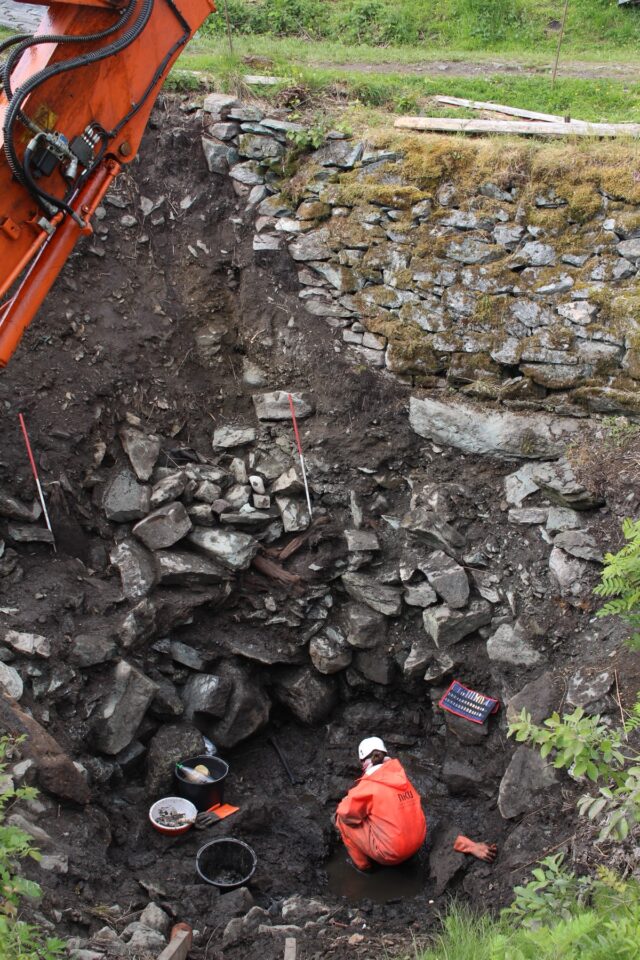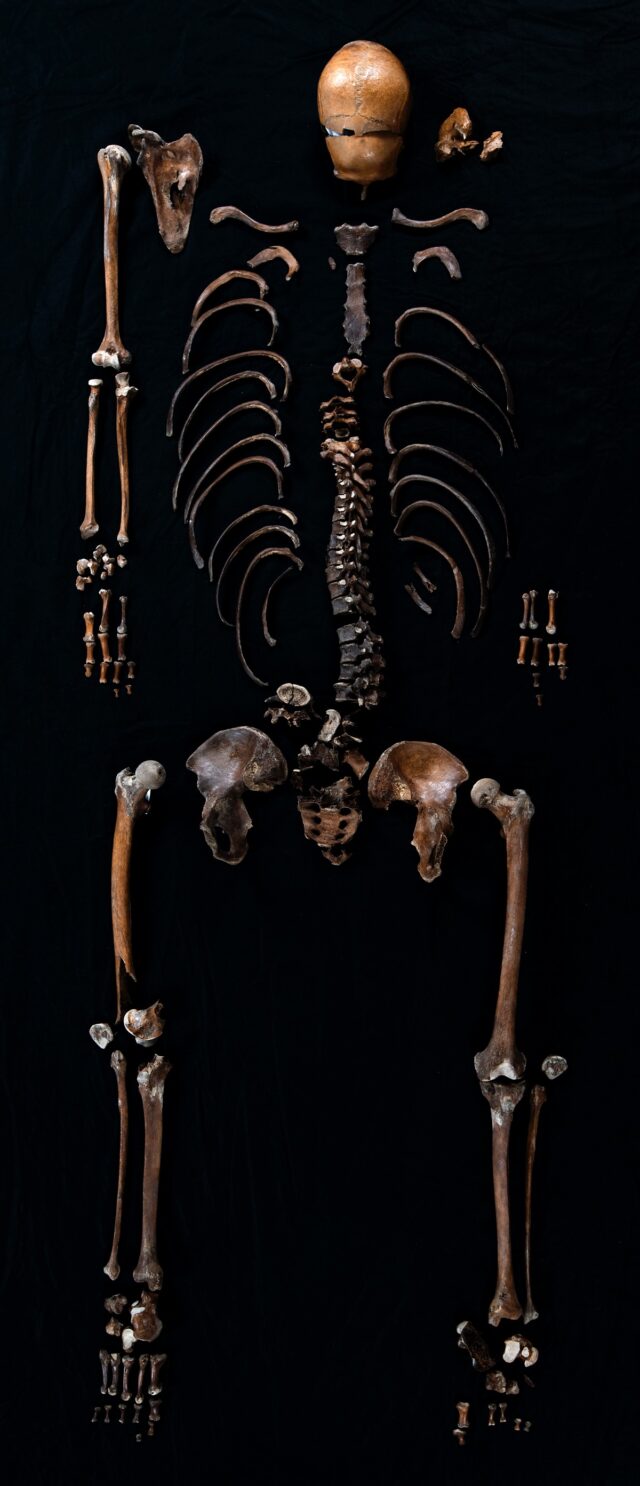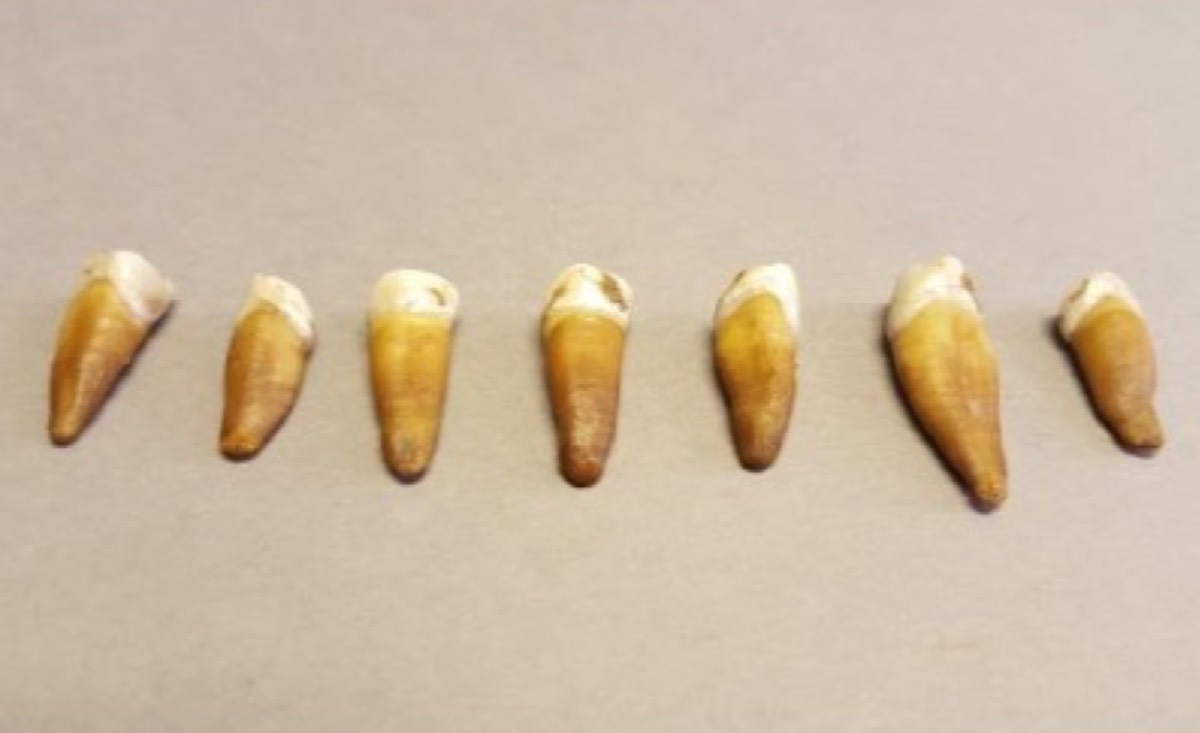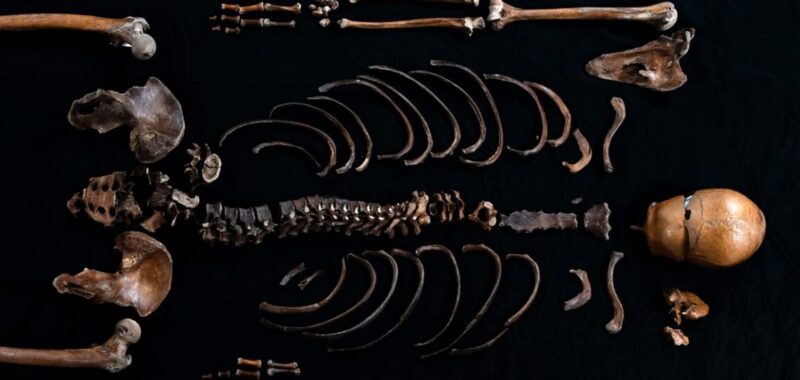
Norwegian Institute for Cultural Heritage Research
Site excavation.
Norwegian Institute for Cultural Heritage Research

Site excavation.
Norwegian Institute for Cultural Heritage Research
The results: The Well-man was indeed male, between 30 and 40, with blue eyes and blond or light-brown hair, and his ancestry was traced to southern Norway, most likely present-day Vest-Agder. This is interesting because King Sverre’s men were from central Norway, and it had long been assumed that the dead body thrown into the well was part of that army. It was the invading Baglers who hailed from southern Norway. The authors are careful to note that one cannot definitively conclude that therefore the Well-man was a Bagler, but it’s certainly possible that the Baglers tossed one of their own dead into the well.
As for whether the action was a form of 12th-century biological warfare intended to poison the well, the authors weren’t able to identify any pathogens in their analysis. But that might be because of the strict decontamination procedures that were used to prepare the tooth samples, which may have also removed traces of any pathogen DNA. So they could not conclude one way or another whether the Well-man had been infected with a deadly pathogen at the time of his death.

Credit:
Norwegian Institute for Cultural Heritage Research
Seven Well-man teeth recovered from the excavation.
Credit:
Norwegian Institute for Cultural Heritage Research
“It was a compromise between removing surface contamination of the people who have touched the tooth and then removing some of the possible pathogens. There are lots of ethical considerations,” said co-author Martin Ellegaard, also of the Norwegian University of Science and Technology. “We need to consider what kind of tests we’re doing now because it will limit what we can do in the future.”
The fact that the Well-man hailed from southern Norway indicates that the distinctive genetic drift observed in southern Norway populations already existed during King Sverre’s reign. “This has implications for our understanding of Norwegian populations, insofar as it implies that this region must have been relatively isolated not only since that time, but also at least for a few hundred years beforehand and perhaps longer,” the authors concluded. Future research sequencing more ancient Norwegian DNA would shed further light on this finding—perhaps even the remains of the Norwegian Saint Olaf, believed to be buried near Trondheim Cathedral.
iScience, 2024. DOI: 10.1016/j.isci.2024.111076 (About DOIs).

